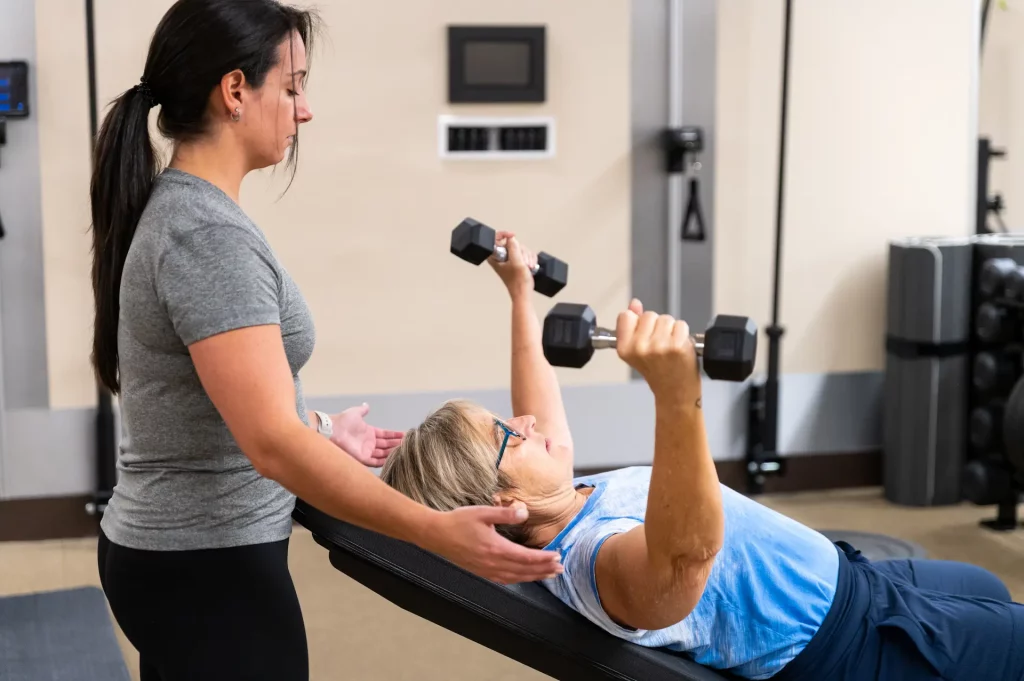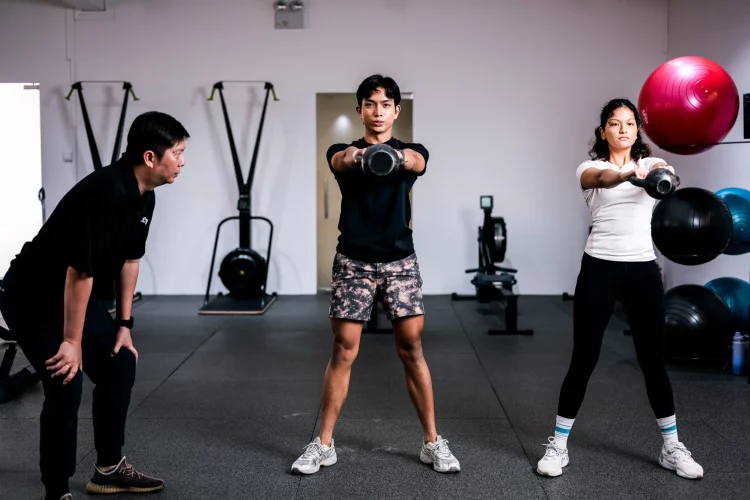Across the globe, underserved communities continue to bear the brunt of health disparities rooted in socioeconomic inequality, limited access to care, and chronic underinvestment in preventive health. These areas are often described as “fitness deserts,” where gyms are scarce, parks are under-maintained, and wellness resources are minimal. But a growing grassroots movement is beginning to rewrite this narrative—one mentor at a time. Fitness mentorship programs, in which trained volunteers support others in their communities to achieve health and wellness goals, are proving to be powerful tools in bridging both physical and emotional wellness gaps. These peer-based models offer not just accountability, but also empathy, empowerment, and long-term impact. As cities and health advocates search for scalable, human-centered solutions, fitness mentorships stand out as a promising frontier.
What Are Fitness Mentorships?
Fitness mentorships are structured relationships in which a more experienced or trained individual provides guidance, motivation, and support to someone newer to fitness or struggling to maintain a healthy lifestyle. These mentors are not always professional trainers—they can be community volunteers, health-minded neighbors, or peers who’ve overcome similar challenges. The relationship typically involves regular check-ins, goal setting, collaborative workouts, and emotional support. Crucially, mentorships are built on trust and relatability, offering a form of wellness guidance that feels less clinical and more personal. Programs often recruit mentors from within the same communities they serve, ensuring cultural sensitivity, shared language, and mutual understanding. Whether it’s helping someone build confidence to attend their first group class or navigating dietary changes on a budget, mentors become bridges to a healthier, more connected life.
Why Underserved Areas Need a Different Approach
Traditional fitness solutions—expensive gyms, boutique studios, personal training packages—often fail to reach those in lower-income neighborhoods. Even when physical infrastructure exists, social and psychological barriers persist. These might include fear of judgment, lack of childcare, trauma history, or a sense of not belonging in fitness culture. Mentorship programs address these hurdles head-on by creating hyper-local, peer-led networks of encouragement. For many individuals in underserved areas, fitness is not simply a matter of willpower—it’s a battle against systemic challenges such as unsafe streets, time poverty, and health misinformation. Fitness mentorships provide a culturally and emotionally relevant entry point into wellness, one that meets people where they are and walks with them toward where they want to be.
Empowering the Mentors Themselves
One of the unique strengths of mentorship-based models is that they not only help mentees but also profoundly benefit the mentors. Many mentorship programs, such as those run by nonprofit fitness collectives or church health ministries, include leadership training and certification for mentors. These sessions equip them with basic knowledge of exercise science, communication skills, mental health awareness, and community organizing. As mentors guide others, they also reinforce their own healthy habits and gain purpose and self-esteem. In many cases, mentors are former mentees—people who have transformed their lives and now want to give back. This cycle of growth, empowerment, and reciprocity turns fitness mentorships into engines of community resilience, where health becomes contagious in the best possible way.
Case Study: “Strong Start” in East Detroit
One illustrative example is “Strong Start,” a community fitness mentorship initiative launched in East Detroit. The program pairs trained volunteers—many of whom are mothers, teachers, or former athletes—with individuals at risk of obesity, heart disease, or diabetes. Mentors meet with mentees weekly in local recreation centers, church basements, or community gardens. They offer practical workouts, meal planning help, and emotional check-ins. Since its launch, Strong Start has reported impressive outcomes: over 70% of participants report improved cardiovascular endurance, reduced anxiety levels, and stronger social ties. Even more compelling is the narrative change—participants no longer see wellness as something for “other people,” but as a right and reality within their own reach.
The Emotional Dimension of Fitness
While physical changes are often the most visible markers of progress, the emotional and psychological impact of fitness mentorships can be even more profound. Many mentees enter these programs with a history of negative body image, trauma, or chronic stress. The safe, judgment-free space provided by mentors helps them rebuild trust in their bodies and their abilities. Exercise becomes a tool not just for weight loss or strength, but for healing. The regular, caring presence of a mentor can be life-changing for someone who has felt invisible or unsupported. Studies have shown that people who exercise with social support experience lower levels of depression and anxiety compared to those who go it alone. In underserved areas, where mental health resources are often scarce, fitness mentorships provide a dual service—nurturing both body and mind.
Cultural Relevance as a Key Ingredient
A critical aspect of successful mentorship programs is cultural relevance. In diverse neighborhoods, fitness ideals and dietary norms can vary significantly from mainstream health narratives. Programs that impose one-size-fits-all solutions often fail to resonate. Fitness mentorships, however, are adaptable and grounded in lived experience. A mentor from the same cultural background as their mentee can tailor recommendations to respect traditions, preferences, and values. Whether it’s incorporating familiar foods into nutrition plans or using culturally relevant music and movement in workouts, these touches make fitness feel less foreign and more welcoming. This relevance increases adherence and fosters a deeper sense of belonging within the health journey.

Integrating with Schools and Youth Centers
Youth-focused fitness mentorships are gaining traction as a preventive strategy in underserved communities. Programs embedded in schools, after-school clubs, or youth centers are creating mentor-mentee relationships that not only promote physical health but also offer guidance on emotional regulation, discipline, and goal-setting. Older students or young adults act as mentors for younger peers, often forming bonds that extend beyond the gym or field. These relationships help youth navigate the pressures of adolescence while building a strong foundation for lifelong wellness. Initiatives like “Girls on the Run” and “Brothers for Fitness” are using this model to reduce dropout rates, boost self-esteem, and interrupt cycles of poor health behavior passed down through generations.
Technology as an Amplifier, Not a Replacement
Digital tools are playing a growing role in fitness mentorships, particularly when face-to-face interactions are limited. Apps and platforms can facilitate goal tracking, virtual check-ins, and shared workouts. Mentors can send motivational texts, video demos, or healthy recipe ideas through messaging groups. Some programs even offer virtual matching, connecting mentors and mentees from different geographic locations but similar backgrounds. However, the most effective programs use technology to supplement—not replace—the human connection at the core of mentorship. The empathy and encouragement of a real person cannot be replicated by an app. But when used wisely, digital tools can scale the impact of fitness mentorships and provide continuity in times of disruption.
Challenges and How to Overcome Them
Despite their promise, fitness mentorships in underserved areas face challenges. Sustaining volunteer engagement, securing funding, ensuring safety, and tracking outcomes can be difficult. Burnout among mentors is a real concern, especially when they juggle their own health and livelihood. To overcome these obstacles, successful programs provide ongoing support and incentives for mentors, build partnerships with local businesses or health departments, and create feedback loops to improve effectiveness. Sustainability also hinges on community ownership—programs that are developed with, not just for, the community are more likely to last. By involving residents in planning, training, and leadership, fitness mentorships evolve into movements rather than short-term interventions.
The Bigger Picture: Mentorships as Public Health Tools
At their core, fitness mentorships are a people-powered response to structural inequity. They represent a shift away from top-down health directives and toward relational, grassroots empowerment. As public health systems reckon with the limitations of traditional models, mentorships offer a cost-effective, scalable, and deeply humane alternative. They build capacity within communities, reduce healthcare burdens, and sow the seeds of wellness in places where hope has been in short supply. In policy terms, they align with social determinants of health, addressing not just behavior but also connection, opportunity, and dignity.
What’s Next? Scaling the Model
To fully realize the potential of fitness mentorships, there must be broader institutional support. Governments and NGOs can fund training programs, provide stipends, or integrate mentorship models into existing community health initiatives. Schools, clinics, and faith-based organizations can serve as hubs for recruitment and engagement. Academic researchers can help quantify impact and build evidence to support replication. And perhaps most importantly, communities themselves must be trusted as the architects of their own wellness journeys. With the right investment and vision, mentorships can move from scattered success stories to standard practice.
Conclusion: Wellness That Belongs to Everyone
In underserved areas where barriers to health are high and resources are thin, fitness mentorships are doing more than promoting exercise—they are rebuilding trust, fostering agency, and creating hope. These programs remind us that wellness is not a luxury or a trend but a human right. By harnessing the power of relationships, shared struggle, and collective growth, mentorships offer a radical reimagining of what community health can look like. They prove that the strongest medicine may not be found in a bottle or a policy—but in the consistent presence of someone who believes in your ability to grow stronger, one step at a time.

















































